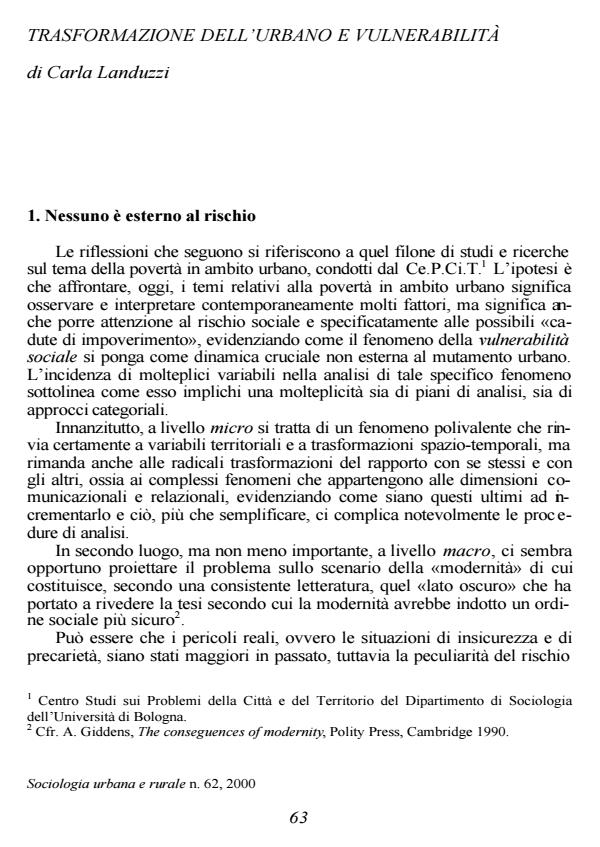Trasformazione dell'urbano e vulnerabilità
Journal title SOCIOLOGIA URBANA E RURALE
Author/s Carla Landuzzi
Publishing Year 1 Issue 2000/62
Language Italian Pages 12 P. File size 39 KB
DOI
DOI is like a bar code for intellectual property: to have more infomation
click here
Below, you can see the article first page
If you want to buy this article in PDF format, you can do it, following the instructions to buy download credits

FrancoAngeli is member of Publishers International Linking Association, Inc (PILA), a not-for-profit association which run the CrossRef service enabling links to and from online scholarly content.
Certain aspects of urban transformation can give rise to psychological and social vulnerability. The increase in residential mobility and territorial fluidity underlying the growth of the new global economy has led to new global and regional hierarchies. In addition, the polarization in the distribution of profit and the composition of work, evident in all the largest cities, places under discussion the notion of rich countries and rich cities, thus producing a new geography of centrality and marginality. The new urban hierarchies require competitive strategies for the global market, entrusted to urban marketing, for which reason the postmodern city entrusts its own reputation to the capacity to activate pull factors in order to be competitive in the urban hierarchization. The hypothesis, confirmed throughout Europe, of a mobility towards large cities leads us to point out certain aspects which we believe to have repercussions on situations of vulnerability. We refer to the link between urban fluidity and growth in accessibility to the city. Considering the scenarios characterizing European cities, and especially Italian cities, we identify new ways of interpreting the phenomenon of vulnerability that we believe can result from the very mechanisms of urban accessibility.
Carla Landuzzi, Trasformazione dell'urbano e vulnerabilità in "SOCIOLOGIA URBANA E RURALE" 62/2000, pp , DOI: